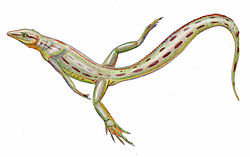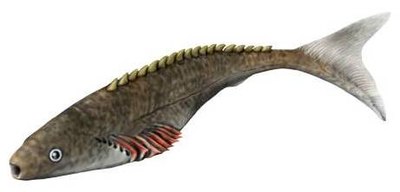Spindle diagram
The figures representing classes are (from left): Agnatha, Chondrichthyes, Osteichthyes, Amphibia, Reptilia, Aves and Mammalia. The two extinct classes are Placodermi and Acanthodii. All classes interpreted traditionally.
Bentons notes to his own tree: Number of families is an imperfect measure of diversity. Reptilia in particular should probably have been shown as far more diverse in the Mesozoic.Relevante Bilder
Relevante Artikel
WirbeltiereWirbeltiere sind Chordatiere mit einer Wirbelsäule. Zu diesem Unterstamm gehören fünf traditionell als Klassen geführte Großgruppen: Fische, Amphibien, Reptilien, Vögel und Säugetiere sowie als urtümliche Vertreter zudem die Rundmäuler. Ihnen wird die informelle Gruppe der Wirbellosen oder Invertebrata gegenübergestellt, die keine Wirbelsäule haben. .. weiterlesen










































